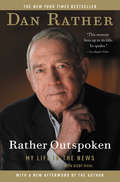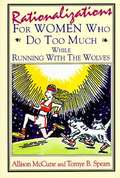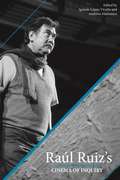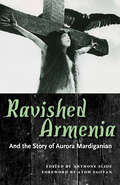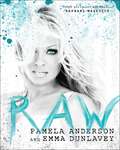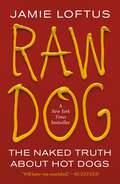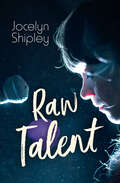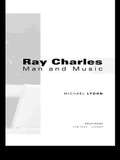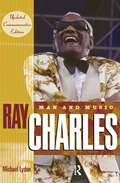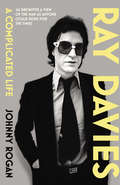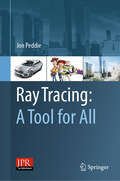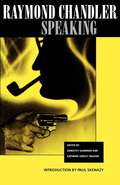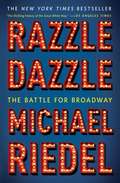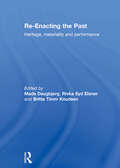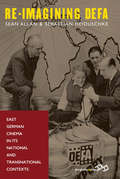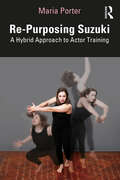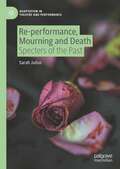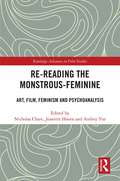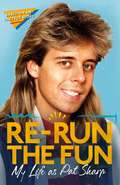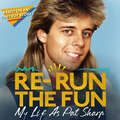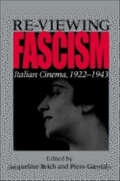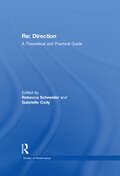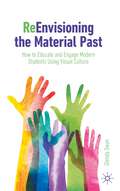- Table View
- List View
Rather Outspoken: My Life in the News
by Dan Rather Digby DiehlThis memoir by Dan Rather -- one of the most pre-eminent journalists of our time -- is told in a straightforward and conversational manner so that you hear his distinctive voice on every page. Rather, -- who has won every prestigious journalism award in his distinguished career -- discusses all the big stories from his decades of reporting. This very personal accounting includes (but is certainly not limited to) his dismissal from CBS, the Abu Ghraib story, the George W. Bush Air National Guard controversy, his coverage of the JFK assassination, the origin of "Hurricane Dan" as well as inside stories about all the top personalities Dan has either interviewed or worked with over his remarkable career. The book will also include Dan's thoughts and reflections on the state of journalism today and what he sees for its future, as well as never-before-revealed personal observations and commentary.
Rationalizations for Women Who Do Too Much While Running with the Wolves
by Allison Mccune Tomye B. SpearsMcCune, a television producer for ABC in Los Angeles, teams up with co-author Tomye Spears to provide readers with thousands of ready-to-use excuses--for everything from exercising to dealing with men--that help today's woman cope with life.
Raul Ruiz's Cinema of Inquiry
by Andreea Marinescu Ignacio Lopez-VicunaMost widely known for his filmic productions, Raúl Ruiz (1941–2011) was a highly prolific, erudite, and innovative artist, whose work is located at the intersection of diverse locations, languages, and aesthetic traditions. Ruiz’s eclectic body of work includes over one hundred films (among them features, shorts, television serials, and videos), books on the theory of cinema, genre-defying fiction books, plays, a radio show, and a multimedia installation. Raúl Ruiz’s Cinema of Inquiry posits the unity of Ruiz’s body of work and investigates the similarities between his very diverse artistic productions. Ruiz’s own concept of “cinema of inquiry” provides the lens through which his films and poetics are examined. Ruiz’s relevance to cinema and the growing interest in his work are due to his legacy as a global filmmaker. Viewers, filmmakers, and film scholars continue to return to his works because his films consistently pose the question of what cinema can be, especially at a time when cinema is increasingly seen as displaced by television and new media. Ruiz expanded the domain of cinema itself, incessantly probing the interstices between cinema and other arts. Editors Ignacio López-Vicuña and Andreea Marinescu, with six other scholars, explore different aspects of Ruiz’s work, with special attention paid to the transnational aspects of Ruiz’s films, critical regionalism, and political and aesthetic interventions. Raúl Ruiz’s Cinema of Inquiry includes close readings of important yet understudied films, as well as two extensive previously unpublished interviews with Ruiz. This comprehensive volume gives voice to a significant filmmaker and artist. Students and scholars of film and media studies will find great value in this collection.
Ravished Armenia and the Story of Aurora Mardiganian
by Anthony Slide"Ravished Armenia" and the Story of Aurora Mardiganian is the real-life tale of a teenage Armenian girl who was caught up in the 1915 Armenian genocide, the first genocide in modern history. Mardiganian (1901-1994) witnessed the murder of her family and the suffering of her people at the hands of the Ottoman Empire. Forced to march over fourteen hundred miles, she was sold into slavery. When she escaped to the United States, Mardiganian was then exploited by the very individuals whom she believed might help. Her story was published in book form and then used as the basis for a 1918 feature film, in which she herself starred. The film Ravished Armenia, also known as Auction of Souls, is a graphic retelling of Aurora Mardiganian's story, with the teenager in the central role, supported by Anna Q. Nilsson and Irving Cummings and directed by Oscar Apfel. Only twenty minutes of the film--the first to deal with the Armenian genocide--is known to survive, but it proves to be a stunning production, presenting its story in newsreel style. This revised edition of Anthony Slide's "Ravished Armenia" and the Story of Aurora Mardiganian also contains an annotated reprint of Mardiganian's original narrative and, for the first time, the full screenplay. In his introduction, Slide recounts the making of the film and Mardiganian's life in the United States, involving a cast of characters including Henry Morgenthau, Mrs. George W. Vanderbilt, Mrs. Oliver Harriman, and film pioneer William Selig. The introduction also includes original comments by Aurora Mardiganian, whom Slide interviewed before her death. Acclaimed Armenian Canadian filmmaker Atom Egoyan, who created a video art installation about Mardiganian in 2007, provides a foreword.
Raw
by Pamela Anderson Emma Dunlavey Raphael MazzuccoSensuality uninhibited. Behind the scenes look at one of Rock &‘n' Roll's favorite women. Captured by Emma Dunlavey. Over a decade's worth of fly-on-the-wall style reportage. Fun, sexy handwritten prose by Pamela expressing herself freely within the images. Sexy and funny, Raw reveals Pamela Anderson at her most intimate. Featuring over a decade of Emma Dunlavey's behind-the-scenes photography, Raw shows Pamela at her wildest, her silliest, and her sexiest. Raw lets the reader be a fly on the wall, witnessing Pamela's adventures around the world. Combined with Pamela's prose and poetry, hand-written and hand-arranged by Pamela, Raw is a beautiful entrée into the life one the world's most exciting and sensual women. A journey worth taking. Proceeds from every print-edition purchase go to the Pamela Anderson Foundation, which supports organizations and individuals that stand on the front lines in the protection of human, animal, and environmental rights.
Raw Dog: The Naked Truth About Hot Dogs
by Jamie LoftusA NEW YORK TIMES AND INDIE BESTSELLER!Part travelogue, part culinary history, all capitalist critique—comedian Jamie Loftus's debut, Raw Dog, will take you on a cross-country road trip in the summer of 2021, and reveal what the creation, culture, and class influence of hot dogs says about America now.A Best Book of the Year from NPR and Vulture. Featured in: NPR Weekend Edition • Bon Appétit • Oprah Daily • Glamour • NY Mag • Splendid Table • The Wall Street Journal • Eater • Betches • USA Today • Boston Globe • Eater • Slate • The Next Big Idea Club • Buzzfeed and more “Wise and funny” —ANDY RICHTER • “Revealing, funny, sad, horny, and insatiably curious” —SARAH MARSHALL • “A wild ride” —ROBERT EVANS • “Deeply incisive and hilariously honest” —JACK O’BRIEN • “Gonzo yet vulnerable” —GABE DUNN • “Hot dog Moby-Dick” —BRANSON REESE • “One of the freshest and most insightful new comedic voices of this decade.” —LINDSAY ELLIS Hot dogs. Poor people created them. Rich people found a way to charge fifteen dollars for them. They’re high culture, they’re low culture, they’re sports food, they’re kids' food, they’re hangover food, and they’re deeply American, despite having no basis whatsoever in America's Indigenous traditions. You can love them, you can hate them, but you can’t avoid the great American hot dog.Raw Dog: The Naked Truth About Hot Dogs is part investigation into the cultural and culinary significance of hot dogs and part travelogue documenting a cross-country road trip researching them as they’re served today. From avocado and spice in the West to ass-shattering chili in the East to an entire salad on a slice of meat in Chicago, Loftus, her pets, and her ex eat their way across the country during the strange summer of 2021. It’s a brief window into the year between waves of a plague that the American government has the resources to temper, but not the interest.So grab a dog, lay out your picnic blanket, and dig into the delicious and inevitable product of centuries of violence, poverty, and ambition, now rolling around at your local 7-Eleven.The hardcover edition of Raw Dog: The Naked Truth About Hot Dogs includes gorgeous endpapers, an illustrated case, as well as illustrations by the author throughout."Raw Dog will leave you nourished." —BuzzFeed"You will certainly never read a funnier book about taking a hot dog-themed road trip across America." —Glamour"A journey both silly and profound." —Vulture, Best Books of 2023At the Publisher's request, this title is being sold without Digital Rights Management Software (DRM) applied.
Raw Talent (Orca Limelights)
by Jocelyn ShipleyFourteen-year-old Paisley loves to sing. Paisley dreams of being a pop star just like her idol, Denzi, who also grew up in the small town of Stonehill. The problem is, Paisley suffers from severe stage fright. She can only sing in private. When word gets out that a famous Stratford actor who has worked with Denzi is staying at a local B&B, Paisley decides it's time to face her fears. She convinces the actor to tutor her and signs up to sing in a high-profile fundraiser. This short novel is a high-interest, low-reading level book for middle-grade readers who are building reading skills, want a quick read or say they don’t like to read!
Ray Charles: Man And Music
by Michael LydonAn extremely detailed account of Ray Charles' personal life, from his childhood to his death and funeral, and of his musical life, including every concert, gig, recording etc.
Ray Charles: Man and Music, Updated Commemorative Edition
by Michael LydonRay Charles: Man and Music is a complete biography of this seminal singer/pianist who has been active on the American music scene since the mid-'50s. Originally published in 1995 by Penguin Books, and universally hailed as the definitive biography, this new edition will bring Charles's life up to date, covering the last 7 years of his life.There are only a few legendary singers who have developed mass audiences while pursuing their own artistic visions: Sinatra is one; Ella Fitzgerald another. Ray Charles undoubtedly belongs in this pantheon of major musical stars. Ray Charles: Man and Music begins with Charles's impoverished childhood in Greenville, Florida, where tragedy struck early when the young Charles went blind at age 6 and was orphaned at age 14. Driven by his enormous talent and determination, Charles landed work playing some of the toughest juke joints in the state, fought heroin addiction, and finally landed a recording contract with Atlantic Records. Unlike other R&B singers, Charles took control of his career from its earliest days, moving on from his gospel-soul stylings of the mid-'50s to break through musical barriers, recording two country albums in the late '50s (at a time when the black presence in country music was barely felt), pure jazz, and then the powerful pop hits of the '60s. Famed music journalist Michael Lydon - a founding editor of Rolling Stone - is uniquely qualified to document Charles's career, having interviewed Charles and followed the star's performances since the 1960s. Originally published in 1995, and universally hailed as the definitive biography, this new edition brings Charles's life up to date, covering the last 7 years of his life. It coincides with the release of a made-for-TV movie starring Jamie Fox as Charles, currently in production by Taylor Hackford. Charles has also issued a new CD recently and remains active as a touring artist throughout the world.
Ray Charles: Soul Man
by Ruth TurkA biography of the popular singer, who became blind as a young boy.
Ray Davies: A Complicated Life
by Johnny RoganNOW UPDATED WITH A NEW EPILOGUE In the summer of 1964, aged twenty, Ray Davies led the Kinks to fame with their number one hit ‘You Really Got Me’. Within months, they were established among the pop elite, swamped by fans and fast becoming renowned for the rioting at their gigs. But Ray’s journey from working-class Muswell Hill to the Rock ’n’ Roll Hall of Fame was tumultuous in the extreme, featuring breakdowns, bitter lawsuits, spectacular punch-ups and a ban from entering the USA. His relationship with his brother Dave is surely the most ferocious and abusive in music history. Based on countless interviews conducted over several decades, this richly detailed and revelatory biography presents the most frank and intimate portrait yet of Ray Davies.
Ray Tracing: A Tool for All
by Jon PeddieThis is the first book to offer a comprehensive overview for anyone wanting to understand the benefits and opportunities of ray tracing, as well as some of the challenges, without having to learn how to program or be an optics scientist.It demystifies ray tracing and brings forward the need and benefit of using ray tracing throughout the development of a film, product, or building — from pitch to prototype to marketing.Ray Tracing and Rendering clarifies the difference between conventional faked rendering and physically correct, photo-realistic ray traced rendering, and explains how programmer’s time, and backend compositing time are saved while producing more accurate representations with 3D models that move.Often considered an esoteric subject the author takes ray tracing out of the confines of the programmer’s lair and shows how all levels of users from concept to construction and sales can benefit without being forced to be a practitioner. It treats both theoretical and practical aspects of the subject as well as giving insights into all the major ray tracing programs and how many of them came about.It will enrich the readers’ understanding of what a difference an accurate high-fidelity image can make to the viewer — our eyes are incredibly sensitive to flaws and distortions and we quickly disregard things that look phony or unreal. Such dismissal by a potential user or customer can spell disaster for a supplier, producer, or developer. If it looks real it will sell, even if it is a fantasy animation. Ray tracing is now within reach of every producer and marketeer, and at prices one can afford, and with production times that meet the demands of today’s fast world.
Raymond Chandler Speaking
by Raymond ChandlerTough-minded and typically idiosyncratic, here is Chandler on Chandler, the mystery novel, writing, Hollywood, TV, publishing, cats, and famous crimes. This skillfully edited selection of letters, articles, and notes also includes the short story "A Couple of Writers" and the first chapters of Chandler's last Philip Marlowe novel, The Poodle Springs Story, left unfinished at his death. Paul Skenazy has provided a new introduction for this edition as well as a new selected bibliography.
Razzle Dazzle: The Battle for Broadway
by Michael Riedel&“A vivid page-turner&” (NPR) detailing the rise, fall, and redemption of Broadway—its stars, its biggest shows, its producers, and all the drama, intrigue, and power plays that happened behind the scenes.&“A rich, lovely, debut history of New York theater in the 1970s and eighties&” (Kirkus Reviews, starred review), Razzle Dazzle is a narrative account of the people and the money and the power that turned New York&’s gritty back alleys and sex-shops into the glitzy, dazzling Great White Way. In the mid-1970s Times Square was the seedy symbol of New York&’s economic decline. Its once shining star, the renowned Shubert Organization, was losing theaters to make way for parking lots and losing money. Bernard Jacobs and Jerry Schoenfeld, two ambitious board members, saw the crumbling company was ripe for takeover and staged a coup and staved off corporate intrigue, personal betrayals and criminal investigations. Once Jacobs and Schoenfeld solidified their power, they turned a collapsed theater-owning holding company into one of the most successful entertainment empires in the world, spearheading the revitalization of Broadway and the renewal of Times Square. &“For those interested in the business behind the greasepaint, at a riveting time in Broadway&’s and New York&’s history, this is the ticket&” (USA TODAY). Michael Riedel tells the stories of the Shubert Organization and the shows that re-built a city in grand style—including Cats, A Chorus Line, and Mamma Mia!—revealing the backstage drama that often rivaled what transpired onstage, exposing bitter rivalries, unlikely alliances, and inside gossip. &“The trouble with Razzle Dazzle is…you can&’t put the damn thing down&” (Huffington Post).
Re-Enacting the Past: Heritage, Materiality and Performance
by Mads Daugbjerg, Rivka Syd Eisner and Britta Timm KnudsenWhat is re-enactment and how does it relate to heritage? Re-enactments are a ubiquitous part of popular and memory culture and are of growing importance to heritage studies. As concept and practice, re-enactments encompass a wide range of forms: from the annual ‘Viking Moot’ festival in Denmark drawing thousands of participants and spectators, to the (re)staged war photography of An-My Lê, to the Titanic Memorial Cruise commemorating the centennial of the ill-fated voyage, to the symbolic retracing of the Berlin Wall across the city on 9 November 2014 to mark the 25th anniversary of its toppling.Re-enactments involve the sensuousness of bodily experience and engagement, the exhilarating yet precarious combination of imagination with ‘historical fact’, in-the-moment negotiations between and within temporalities, and the compelling drive to re-make, or re-presence, the past. As such, re-enactments present a number of challenges to traditional understandings of heritage, including taken-for-granted assumptions regarding fixity, conservation, originality, ownership and authenticity. Using a variety of international, cross-disciplinary case studies, this volume explores re-enactment as practice, problem, and/or potential, in order to widen the scope of heritage thinking and analysis toward impermanence, performance, flux, innovation and creativity.This book was originally published as a special issue of the International Journal of Heritage Studies.
Re-Imagining DEFA: East German Cinema in its National and Transnational Contexts
by Sebastian Heiduschke Seán AllanBy the time the Berlin Wall collapsed, the cinema of the German Democratic Republic—to the extent it was considered at all—was widely regarded as a footnote to European film history, with little of enduring value. Since then, interest in East German cinema has exploded, inspiring innumerable festivals, books, and exhibits on the GDR’s rich and varied filmic output. In Re-Imagining DEFA, leading international experts take stock of this vibrant landscape and plot an ambitious course for future research, one that considers other cinematic traditions, brings genre and popular works into the fold, and encompasses DEFA’s complex post-unification “afterlife.”
Re-Purposing Suzuki: A Hybrid Approach to Actor Training
by Maria PorterRe-Purposing Suzuki: A Hybrid Approach to Actor Training introduces a system of text analysis that synthesizes physical, psychological, and vocal components in order to truthfully embody heightened texts and contexts. By understanding how the author has re-purposed Suzuki and other physical training methods, as well as Stanislavski, readers will gain an awareness of how to analyze a particular training method by extrapolating its key components and integrating it into a holistic, embodied approach to text analysis. The book explores a method of physical scoring via Rules of the Body and Rules of Composition, as well as a method of approaching heightened texts from Greek drama to post-modern playwrights that draws on the individual actor’s imagination and experience and integrates voice, mind, and body. Readers will be able to either replicate this approach, or apply the logic of its building blocks to assemble their own personal creative process applicable to a variety of performance genres. This is a source book for actors, theatre students, practitioners, and educators interested in assembling tools derived from different sources to create alternative approaches to actor training. While the process outlined in the book evolves in a classroom setting, the components of the pedagogy can also be practiced by individuals who are interested in finding new ways to explore text and character and bring them into their own personal practice.
Re-performance, Mourning and Death: Specters of the Past (Adaptation in Theatre and Performance)
by Sarah JuliusThis book examines the recent trend for re-performance and how this impacts on the relationship between live performance and death. Focusing specifically on examples of performance art the text analyses the relationship between performance, re-performance and death, comparing the process of re-performance to the process of mourning and arguing that both of these are processes of adaptation and survival. Using a variety of case studies, including performances by Ron Athey, Julie Tolentino, Martin O’Brien, Sheree Rose, Jo Spence and Hannah Wilke, the book explores performances which can be considered acts of re-performance, as well as performances which examine some of the critical concerns of re-performance, including notions of illness, loss and death. By drawing upon both philosophical and performance studies discourses the text takes a novel approach to the relationship between re-performance, mourning and death.
Re-reading the Monstrous-Feminine: Art, Film, Feminism and Psychoanalysis (Routledge Advances in Film Studies)
by Audrey Yue Nicholas Chare Jeanette HoornThis book provides a critical reappraisal of Barbara Creed’s ground-breaking work of feminist psychoanalytic film scholarship, The Monstrous-Feminine, which was first published in 1993. The Monstrous-Feminine married psychoanalytic thinking with film analysis in radically new ways to provide an invaluable corrective to conventional approaches to the study of women in horror films, with their narrow emphasis on woman’s victimhood. This volume, which will mark 25 years since the publication of The Monstrous-Feminine, brings together essays by international scholars working across a variety of disciplines who take up Creed’s ideas in new ways and fresh contexts or, more broadly, explore possible futures for feminist and/or psychoanalytically informed art history and film theory.
Re-run the Fun: My Life as Pat Sharp
by Pat Sharp Darren Richman Luke Catterson'The perfect antidote to 2020' Huffington Post'A must-read if you like funny things' Greg James'I had no idea Pat Sharp's life story would be so hilarious and I strongly suspect neither did he' Nish KumarPat Sharp is a man out of time.For those of a certain generation, he is an iconic figure synonymous with good fun, great hair and excess gunge. For others, he's just that bloke with a mullet. Fame is a fickle beast and, since the cancellation of Fun House in 1999 ('Just ten years into its run, when it was finally finding its feet'), Pat has become a reclusive figure, only emerging from his splendid isolation to pop up on things like I'm A Celebrity: Get Me Out Of Here, Never Mind the Buzzcocks and Come Dine with Me. Until now.With time on his hands and now reliant on a faulty memory, Pat has expertly blended fact and . . . fiction: revealing all about his adventures with David Hassselhoff at the Berlin Wall in 1989; how he broke up a fight between Damon Albarn and Liam Gallagher at a house party; the time he suggested Geri's dress be a Union Jack; and much more.A definitive work (based on very little fact) that anatomises the cultural trends of the '80s and '90s, Re-run the Fun is just the kind of sorta-biography we need in these turbulent times. Finally, the Great British public can learn what life is like just about in sight of the top - the highs, the lows and the hair tips.'It's easy to forget, as I had, that Pat Sharp is so much more than an iconic haircut and a helter-skelter - and this well overdue book goes into hilarious, largely-fabricated detail about Pat's critical role in shaping our world today' Rick Edwards'No previous knowledge of Pat Sharp is required' Paul Sinha
Re-run the Fun: My Life as Pat Sharp
by Pat Sharp Darren Richman Luke Catterson'The perfect antidote to 2020' Huffington Post'A must-read if you like funny things' Greg James'I had no idea Pat Sharp's life story would be so hilarious and I strongly suspect neither did he' Nish KumarPat Sharp is a man out of time.For those of a certain generation, he is an iconic figure synonymous with good fun, great hair and excess gunge. For others, he's just that bloke with a mullet. Fame is a fickle beast and, since the cancellation of Fun House in 1999 ('Just ten years into its run, when it was finally finding its feet'), Pat has become a reclusive figure, only emerging from his splendid isolation to pop up on things like I'm A Celebrity: Get Me Out Of Here, Never Mind the Buzzcocks and Come Dine with Me. Until now.With time on his hands and now reliant on a faulty memory, Pat has expertly blended fact and . . . fiction: revealing all about his adventures with David Hassselhoff at the Berlin Wall in 1989; how he broke up a fight between Damon Albarn and Liam Gallagher at a house party; the time he suggested Geri's dress be a Union Jack; and much more.A definitive work (based on very little fact) that anatomises the cultural trends of the '80s and '90s, Re-run the Fun is just the kind of sorta-biography we need in these turbulent times. Finally, the Great British public can learn what life is like just about in sight of the top - the highs, the lows and the hair tips.'It's easy to forget, as I had, that Pat Sharp is so much more than an iconic haircut and a helter-skelter - and this well overdue book goes into hilarious, largely-fabricated detail about Pat's critical role in shaping our world today' Rick Edwards'No previous knowledge of Pat Sharp is required' Paul Sinha
Re-run the Fun: My Life as Pat Sharp
by Pat Sharp Darren Richman Luke Catterson'The perfect antidote to 2020' Huffington Post'A must-read if you like funny things' Greg James'I had no idea Pat Sharp's life story would be so hilarious and I strongly suspect neither did he' Nish KumarPat Sharp is a man out of time.For those of a certain generation, he is an iconic figure synonymous with good fun, great hair and excess gunge. For others, he's just that bloke with a mullet. Fame is a fickle beast and, since the cancellation of Fun House in 1999 ('Just ten years into its run, when it was finally finding its feet'), Pat has become a reclusive figure, only emerging from his splendid isolation to pop up on things like I'm A Celebrity: Get Me Out Of Here, Never Mind the Buzzcocks and Come Dine with Me. Until now.With time on his hands and now reliant on a faulty memory, Pat has expertly blended fact and . . . fiction: revealing all about his adventures with David Hassselhoff at the Berlin Wall in 1989; how he broke up a fight between Damon Albarn and Liam Gallagher at a house party; the time he suggested Geri's dress be a Union Jack; and much more.A definitive work (based on very little fact) that anatomises the cultural trends of the '80s and '90s, Re-run the Fun is just the kind of sorta-biography we need in these turbulent times. Finally, the Great British public can learn what life is like just about in sight of the top - the highs, the lows and the hair tips.'It's easy to forget, as I had, that Pat Sharp is so much more than an iconic haircut and a helter-skelter - and this well overdue book goes into hilarious, largely-fabricated detail about Pat's critical role in shaping our world today' Rick Edwards'No previous knowledge of Pat Sharp is required' Paul Sinha
Re-viewing Fascism: Italian Cinema, 1922–1943
by Jacqueline Reich and Piero GarofaloWhen Benito Mussolini proclaimed that "Cinema is the strongest weapon," he was telling only half the story. In reality, very few feature films during the Fascist period can be labeled as propaganda. Re-viewing Fascism considers the many films that failed as "weapons" in creating cultural consensus and instead came to reflect the complexities and contradictions of Fascist culture. The volume also examines the connection between cinema of the Fascist period and neorealism—ties that many scholars previously had denied in an attempt to view Fascism as an unfortunate deviation in Italian history. The postwar directors Luchino Visconti, Roberto Rossellini, and Vittorio de Sica all had important roots in the Fascist era, as did the Venice Film Festival. While government censorship loomed over Italian filmmaking, it did not prevent frank depictions of sexuality and representations of men and women that challenged official gender policies. Re-viewing Fascism brings together scholars from different cultural and disciplinary backgrounds as it offers an engaging and innovative look into Italian cinema, Fascist culture, and society.
Re: A Theoretical and Practical Guide (Worlds of Performance)
by Gabrielle Cody Rebecca SchneiderRe: Direction is an extraordinary resource for practitioners and students on directing. It provides a collection of ground-breaking interviews, primary sources and essays on 20th century directing theories and practices around the world. Helpfully organized into four key areas of the subject, the book explores: * theories of directing * the boundaries of the director's role * the limits of categorization * the history of the theatre and performance art. Exceptionally useful and thought-provoking introductory essays by editors Schneider and Cody guide you through the wealth of materials included here. Re: Direction is the kind of book anyone interested in theatre history should own, and which will prove an indispensable toolkit for a lifetime of study.
ReEnvisioning the Material Past: How to Educate and Engage Modern Students Using Visual Culture
by Glenda SwanThis book is designed to help instructors effectively incorporate images and other aspects of material culture into their pedagogy in an engaging and relatable manner. The author draws on her personal experiences as an art historian of ancient art who instructs a wide variety of undergraduates. In addition to helping students to look and think critically, the book explores how the material culture of the past can be a potent tool in motivating student involvement with course content and sharpening skills vital for navigating contemporary culture.
